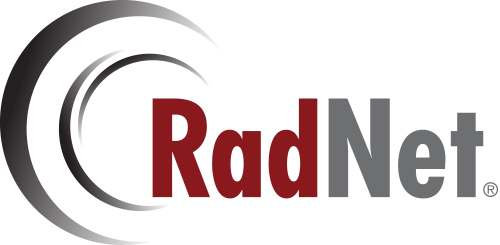RadNet is Ready for the Data Quake

2018 marked the 8th year RadNet co-hosted a booth with eRAD at RSNA. As part of our commitment to thought leadership in imaging, we submitted feature articles for Radiology News Daily, a publication distributed at RSNA. We hope you enjoy this post about RadNet and how we are Leading Radiology Forward.
According to Seema Verma, Administrator of the Centers for Medicare and Medicaid Services (CMS), a “data quake” is coming. CMS intends to unleash an unprecedented amount of data in an effort to drive innovation in healthcare technology.
The need is clear. In the next eight years, one out of every five dollars in the U.S. economy will be spent on healthcare. CMS is determined to properly steward those dollars, to ensure that the spending adds concrete value for patients.
In radiology, RadNet is already pioneering cutting edge technology—and is modelling real-world solutions to the most thorny challenges identified by CMS. Those are price transparency, accurate diagnoses, patient access to data, and easy sharing of information for care continuity.
RadNet CEO Dr. Howard Berger on IT Innovation
“Good medicine is good business,” said Howard Berger, M.D., President and Chief Executive Officer of RadNet. “We’re bringing much greater precision to patient care through our innovations in I.T.—on the clinical side and the business side.”
eRAD, RadNet’s technology division, is continually enhancing its software portfolio and actively deploying those innovations. Since RadNet is the only imaging provider to make its software available in the marketplace, eRAD powers RadNet’s 340+ sites as well as hundreds of other centers in the U.S. and abroad.
RadNet has long advocated for and practiced price transparency, leveraging eRAD technology to tell patients their out-of-pocket costs before the visit. eRAD is now augmenting existing technology with artificial intelligence (AI) to make billing even more accurate. Predictive analyses and sophisticated algorithms have a direct effect on the patient experience.
On the clinical side, AI algorithms also make for greater precision in diagnoses. The technology can create “heat maps” that facilitate better detection in an image. RadNet also supports radiologist accuracy through natural-language processing (NLP). RadNet uses NLP to help radiologists comply with the reporting requirements of CMS quality measures. If a stratified requirement exists—a certain type of patient, with a certain type of exam, and a certain type of condition requires very specific adherence to a certain guideline—it is much easier to drive that adherence through NLP.
RadNet is embedding quality checks into its technology in other ways. Protocol consistency and oversight is being built into eRAD RIS, as are clinical tasks—so that the patient record is complete, trackable, and accurate.
And the whole is greater than the sum of its parts. When AI is used to aid detection of abnormalities in an image, the radiologist doesn’t only get a higher priority study—he or she has a complete patient record associated with that image immediately available. Knowing the full context of the patient’s condition significantly improves accuracy and efficiency in diagnosis.
eRAD RIS is a 2025-Certified Electronic Health Record technology, which means it meets the latest, most stringent standards for interoperability. That’s key for patient access to records, and for breaking down barriers to any kind of information sharing.
Through eRAD, RadNet is out in front with the most advanced initiatives in healthcare I.T., and the “data quake” will only expand the possibilities.
